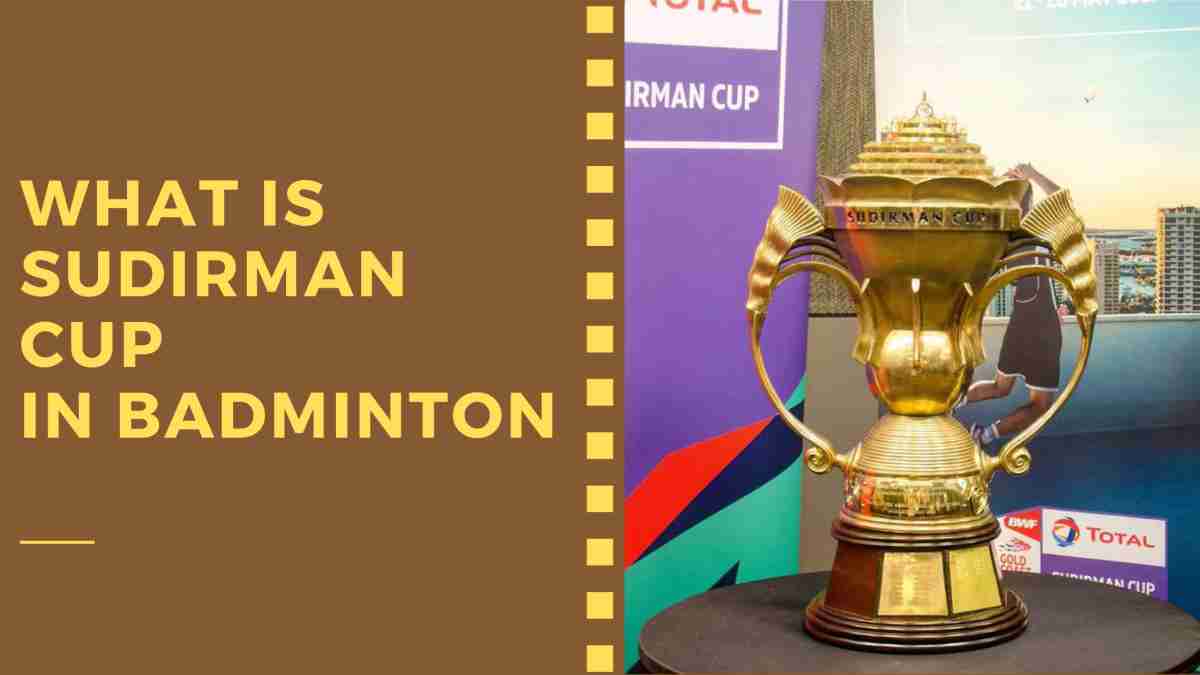As you know, badminton has five disciplines where men’s and women’s shuttlers either compete in singles or doubles categories. The players participate in their preferred disciplines in major badminton tournaments.
There are a few tournaments that club all these disciplines under a match, forming it into mixed-team competitions. Among them is the Sudirman Cup, which is a prestigious tournament in the badminton circuit.
So what is the Sudirman Cup?
The Sudirman Cup is a mixed-team event organised by the Badminton World Federation (BWF). This mixed-team tournament has been taking place every two years since 1989.
The national badminton associations affiliated with the BWF contest in the tournament, with players competing in men’s and women’s singles, men’s, women’s, and mixed doubles categories.
Teams compete against each other in a match consisting of each discipline game, meaning five games per match.
How did the Sudirman Cup get its name?
The tournament derives its name from Dick Sudirman, who was a former Indonesian player. He even founded the country’s national body – the All Indonesia Badminton Association, also known as Persatuan Bulutangkis Seluruh Indonesia (PBSI).
Sudirman also served as the President of the national body for 22 years. During his administrative days, he was a respected figure in the badminton circuit, working closely with other governing bodies.
Sudirman’s most notable contribution towards badminton came from 1978 to 1981, when the BWF (then International Badminton Federation) was at loggerheads with the World Badminton Federation, a separated group of members from the BWF.
There were conflicts between the two bodies, and Sudirman decided to play the mediator role. He had friendly relations with some members of both groups, which helped to merge both bodies into one, forming the BWF in 1981. Sudirman’s efforts helped clear the roadblocks, resulting in unity among all member nations.
He remained the President of PBSI till 1981 before he passed away in June 1986. In view of Sudirman’s remarkable administrative work, PBSI’s then-vice president, Suharso Suhandinata, put forward a suggestion of starting a tournament named after him.
Two years later, the BWF accepted the proposal and instituted the mixed team championships after Sudirman. In 1989, the inaugural edition of the Sudirman Cup took place in Jakarta, Indonesia, where the hosts emerged winners.
How many teams qualify for the Sudirman Cup?
The number of participating teams has varied since its inception. But after 2021, a total of 16 teams make it to the Sudirman Cup.
The tournament hosts and the reigning champions directly qualify for the event, while the remaining 14 spots go to the teams that qualify from continental competitions and world rankings.
Four nations each from Asia and Europe enter through the continental qualifiers, while one team each from Africa, Oceania, and Pan America qualifies for the Sudirman Cup. The BWF decides the remaining teams based on their World Team Rankings.
What is the format of the Sudirman Cup?
The format is rather simple, with the 16 teams split into four groups. Each group has four national teams taking on one another once.
They will play in a match consisting of five games, starting with mixed doubles and followed by singles (men’s and women’s) and doubles (men’s and women’s) events. The top two teams with the most points from each group advance to the quarter-finals.
There are five games per match in knockouts as well, but all games happen only if no team wins three games heading into the fifth game. The quarter-final winners proceed into the semis, with the winners further heading into the final.
Which is the most successful team in the Sudirman Cup?
China is the most successful team in the Sudirman Cup’s history, having won the mixed team event 13 times. The Chinese shuttlers are a force in the competition, maintaining their country’s dominance.
Here are the teams that have won the Sudirman Cup:
| Team | Titles |
|---|---|
| China | 13 |
| South Korea | 4 |
| Indonesia | 1 |
Read Next | FIFA World Cup Structure – Explained
